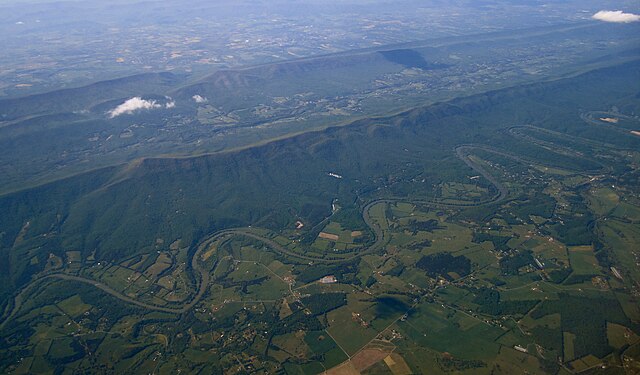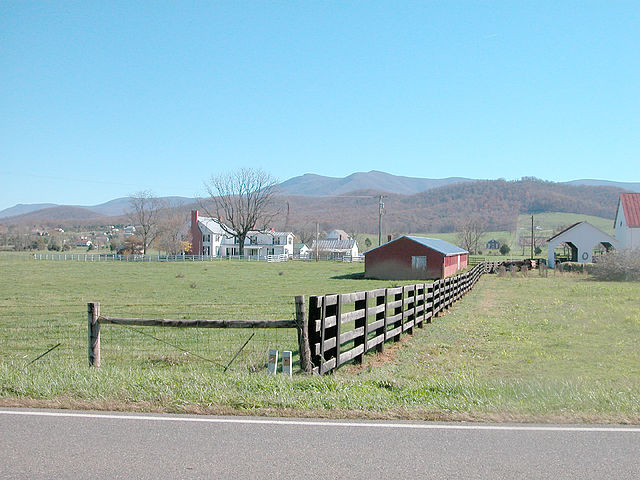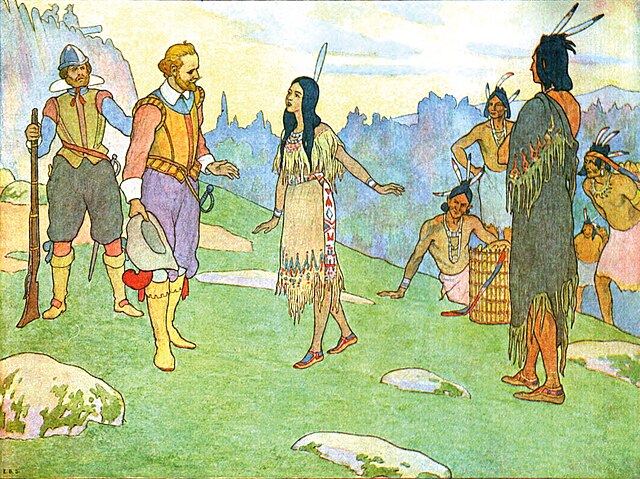The Shenandoah Valley is a geographic valley and cultural region of western Virginia and the Eastern Panhandle of West Virginia in the United States. The Valley is bounded to the east by the Blue Ridge Mountains, to the west by the eastern front of the Ridge-and-Valley Appalachians, to the north by the Potomac River, to the south by the James River, and to the Southwest by the New River Valley. The cultural region covers a larger area that includes all of the Valley plus the Virginia Highlands to the west and the Roanoke Valley to the south. It is physiographically located within the Ridge and Valley Province and is a portion of the Great Appalachian Valley.
A view across the Shenandoah Valley and Shenandoah River
The Shenandoah Valley in autumn
A poultry farm with the Blue Ridge Mountains in the background
A farm in the fertile Shenandoah Valley
Virginia, officially the Commonwealth of Virginia, is a state in the Southeastern and Mid-Atlantic regions of the United States between the Atlantic Coast and the Appalachian Mountains. The state's capital is Richmond and its most populous city is Virginia Beach, though its most populous subdivision is Fairfax County, part of Northern Virginia, where slightly over a third of Virginia's population of 8.72 million live as of 2023.
The story of Pocahontas was simplified and romanticized by later artists and authors, including Smith himself, and promoted by her descendants, some of whom married into elite colonial families.
In 1699, after the statehouse in Jamestown was destroyed by fire, the Colony of Virginia's capitol was moved to Williamsburg, where the College of William & Mary was founded six years earlier.
In 1765, Patrick Henry led a protest of the unpopular Stamp Act in the House of Burgesses, later depicted in this portrait by Peter F. Rothermel.
Eyre Crowe's 1853 portrait, Slaves Waiting for Sale: Richmond, Virginia, which he completed after visiting Richmond's slave markets, where thousands were sold annually








